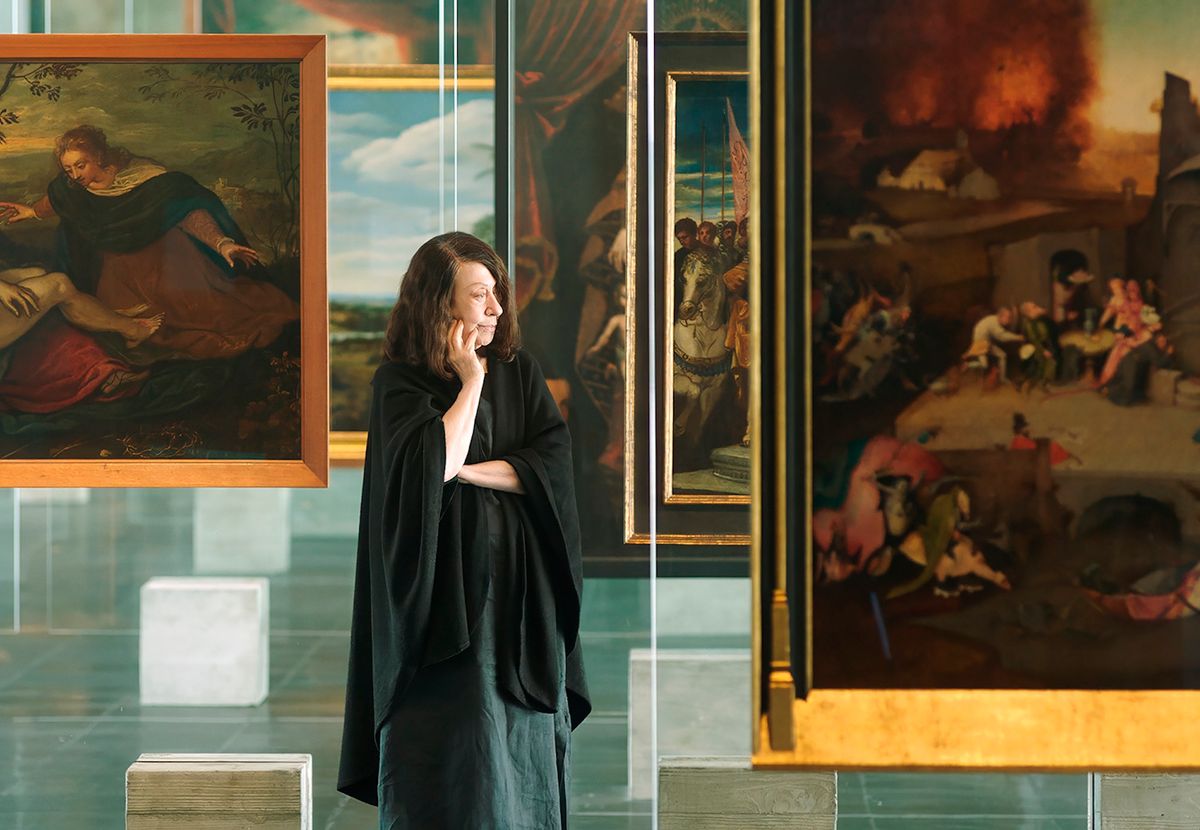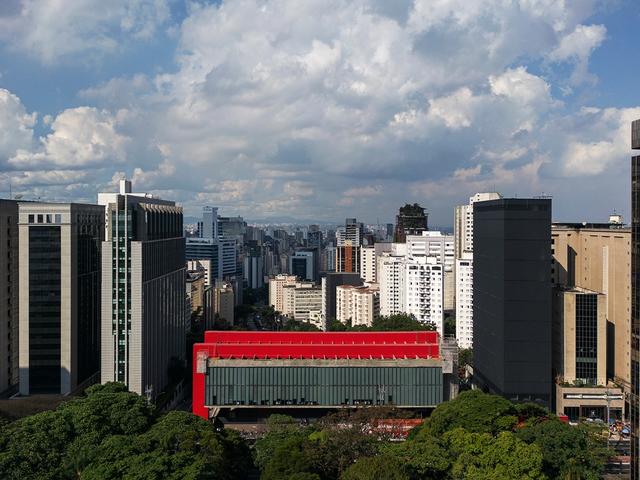The dust from construction on Avenida Paulista, São Paulo’s thoroughfare for businesses, malls and cultural centres, had not yet settled as the first visitors poured into the Museu de Arte de São Paulo’s (Masp) newly inaugurated expansion on 28 March.
At a press event two days earlier, Masp’s artistic director Adriano Pedrosa said that while the highly anticipated extension was opening its doors, work on the tunnel between the annex and historical building next-door would continue until late 2025.
While construction workers toiled outside, the annex façade partly obstructed from the street by construction fencing, Pedrosa said the inaugural exhibitions offer a panorama of Masp’s 78-year history, with the majority of the works on view drawn from the museum’s permanent collection.
Contrast and continuity
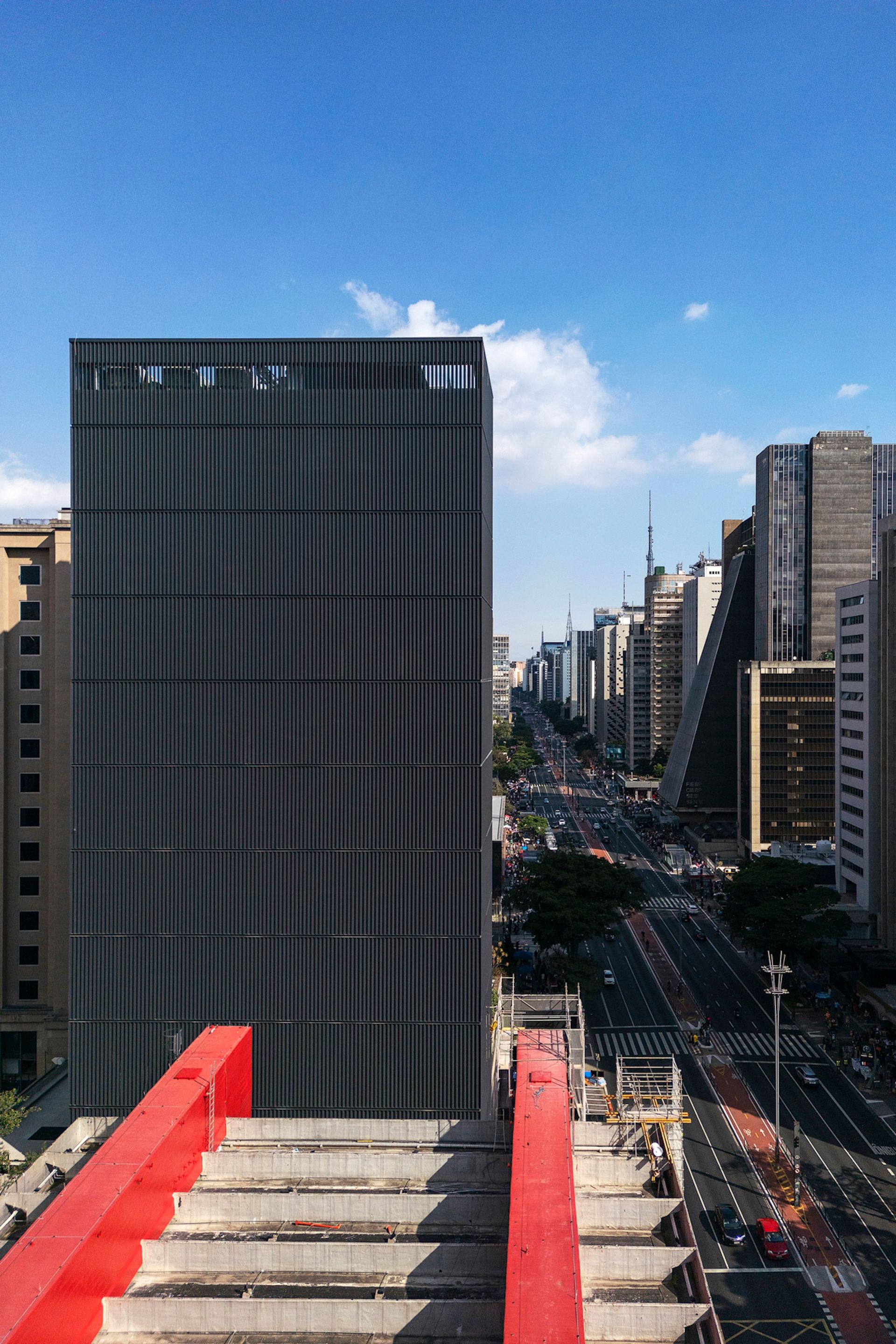
View of the Masp's new Pietro Maria Bardi Building Photo by Leonardo Finotti
The black annex tower, named after Masp’s first director Pietro Maria Bardi, offers a striking visual counterpoint to—yet also a formal continuity with—the museum’s historical building. The latter’s elevated, horizontal, glass-and-concrete block, designed by the architect Lina Bo Bardi (Pietro's wife), conveys brute solidity. By contrast, the annex, an abandoned and repurposed residential project that was re-designed by Metro Arquitetos Associados, is slim, vertical and airy. Seen through the tower’s perforated wire-mesh, the city’s skyscrapers feel within reach.
The vistas are particularly stunning from the top floor. Here, the only work currently on view is Labyrinth (Variant 2) (1984), a stainless-steel wire installation by Lydia Okumura that echoes the meshy textures of the tower’s outer skin. The curvy work also resonates with the spiral concrete staircase leading to the mezzanine, a design element that recalls Lina Bo Bardi’s architectural legacy—including, for instance, the winding staircase at Solar do Unhão, a 17th-century sugar mill she renovated in Salvador, Bahia (which now houses the city’s Museu de Arte Moderna). The predominance of concrete throughout the interior, including staircases and the blocky steps from the entrance to the bookstore, echo Bo Bardi’s predilection for raw materials.
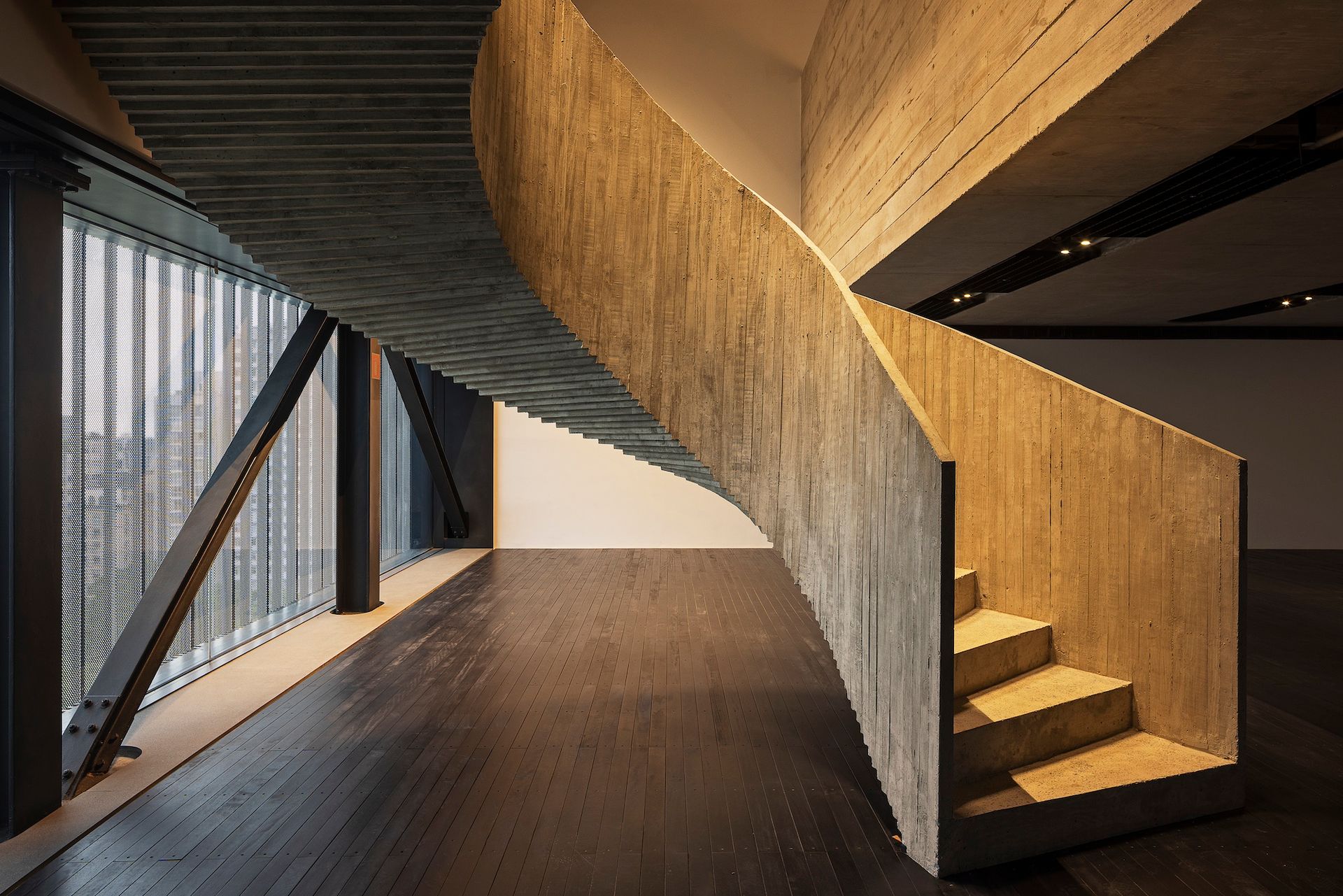
Interior staircase in Masp's new Pietro Maria Bardi Building Photo by Leonardo Finotti
European and homegrown vanguards
As South America’s pre-eminent museum dedicated to Modern art, Masp consistently collected European masters under Mario Bo Bardi’s 45-year directorship. Its holdings also reflect Brazil’s unique culture. Masp Histories, spanning the museum’s history from 1947 to the present, part of the inaugural programme Five Essays on Masp (until 3 August), narrates this multifaceted history.
In Masp Histories, select paintings and archival photographs are accompanied by news articles, archival materials and exhibition catalogues shown in glass vitrines. Rembrandt, Vincent van Gogh and Brazilian modernists such as Cândido Portinari mingle with materials related to blockbuster exhibitions such as Tarsila do Amaral: Cannibalizing Modernism (2019), the most-visited show in Masp’s history.
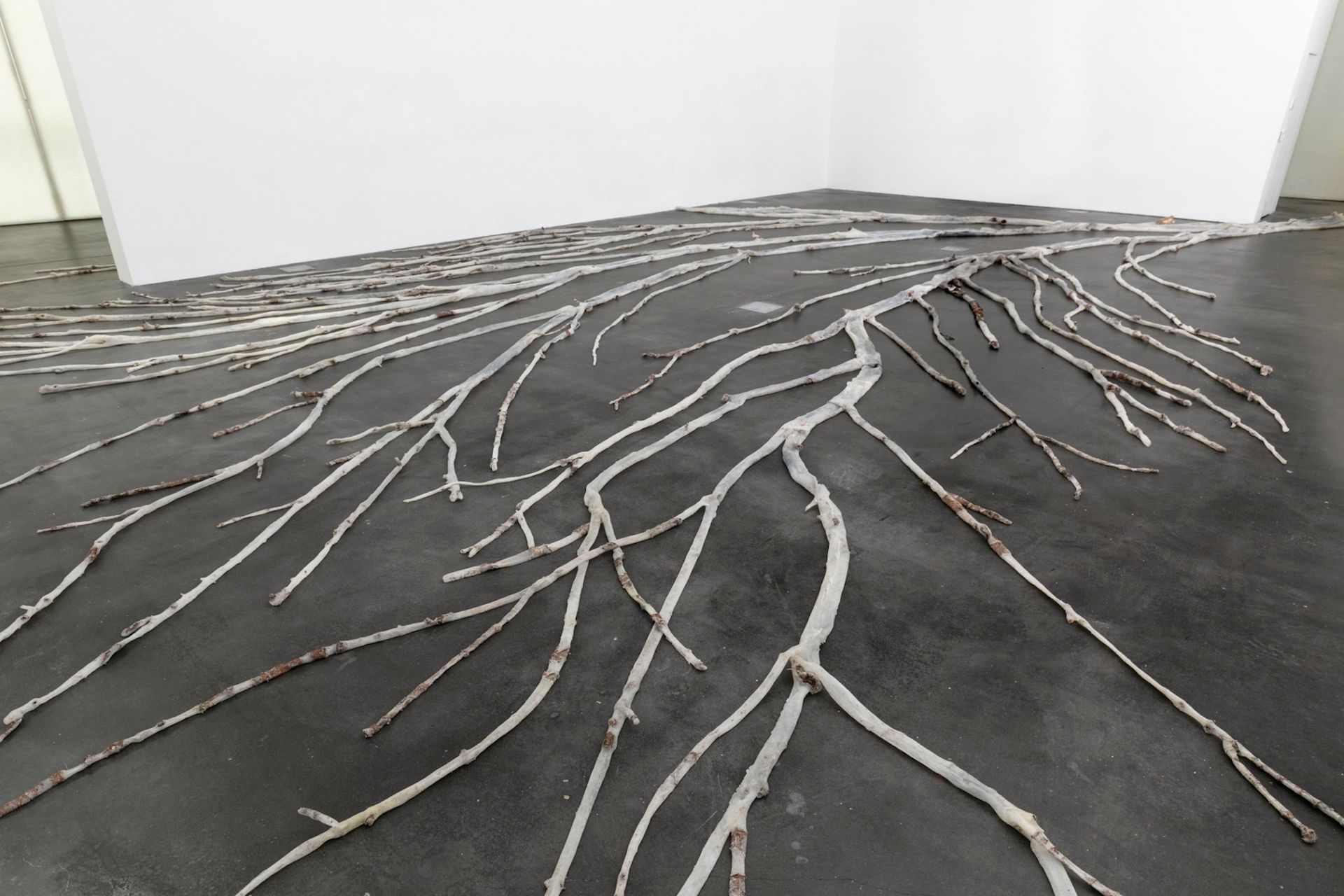
Clarissa Tossin, Morte por onda de calor (Death by the heat wave), 2021. Collection of the artist. Photo: Wes Magyar
The sweeping account of the museum’s history also commemorates seminal shows of popular, Indigenous and Afro-Brazilian art, such as Lina Bo Bardi’s 1969 exhibition The Hand of Brazilian People and the 2018 survey Afro-Atlantic Histories. The museum’s early financial precarity, fraught conservation efforts and role in the country’s turbulent history—with Masp’s outdoor plaza serving as a site of historic mass protests, such as against the dictatorship—are also recapped.
Lina Bo Bardi’s imprint on cultural theory and Brazilian architecture is traced in detail on the annex’s cavernous second level, where the British artist Isaac Julien’s nine-channel video installation, A Marvelous Entanglement (2019), offers a lyrical interpretation of her career.
A push for geometric abstraction
Masp’s original focus on figurative art left gaps in its collection of abstract works. Pedrosa stressed ongoing efforts to fill them, reflected in the exhibition Geometries on the fourth floor: of the 77 works featured, five were in Masp’s collection when it opened and roughly half are recent acquisitions.
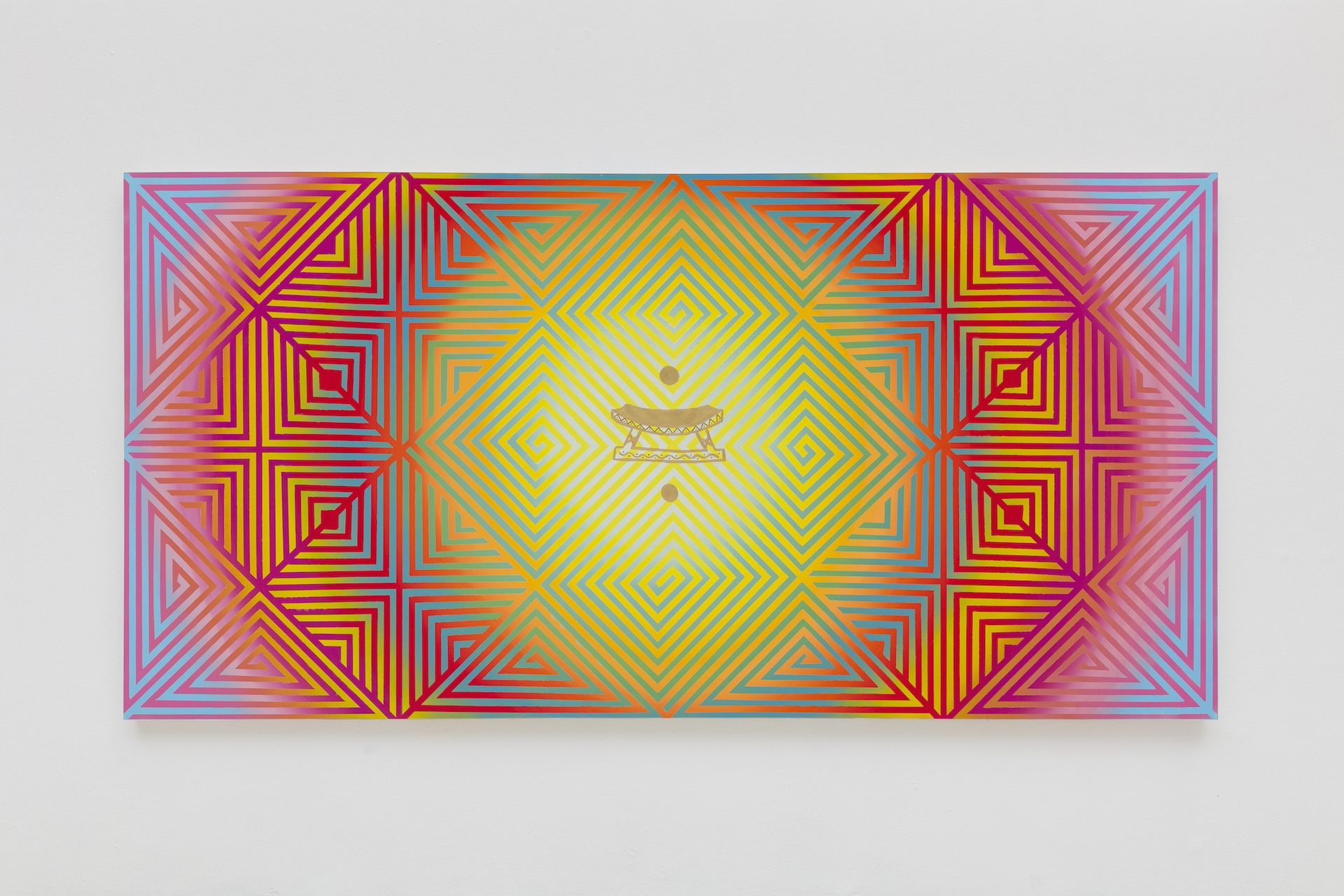
Daiara Tukano, Kumurõ, undated. Museu de Arte de São Paulo Assis Chateaubriand, gift of Fábio Ulhoa Coelho and Mônica Andrigo Moreira de Ulhoa Coelho Photo: Ana Pigosso
The elegant, compact Geometries traces the arc of Latin American abstract art, beginning from the 1950s with artists interested in constructivism, such as Lygia Pape and Willys de Castro; followed by the São Paulo school of geometric photography; and experiments with abstraction from the 1970s to the 90s by artists including Rubem Valentim and Brígida Baltar. Works by younger artists include architectural photography by Luisa Lambri, sculpture by Marcius Galan and textiles by Daiara Tukano. Select works by artists from Argentina, Chile and outside Latin America broaden the geographic scope.
Regina Teixeira de Barros, the curator of collections, underscored the adaptability of the new space. “In the old building, we were confined by a certain rigidity,” she says, while also stressing the importance of Masp’s push to present concrete and neo-concrete art, foregrounding the uniquely Latin American contribution to the history of international abstraction.


